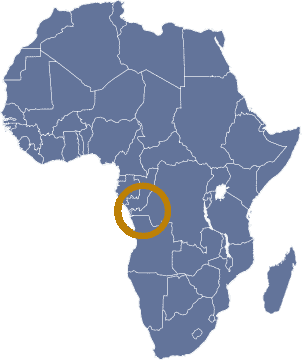

The Kongo collections consist of about a dozen anthropomorphic min'kisi figures from the Vili/Loango coast and one very fine example of a ceremonial wand from the Nkimba society in Mayombe, representing the double rainbow which stands for the cosmic two-headed serpent Mbumba Luangu. MacGaffey and Janzen will use these objects, along with Janzen's photos of Manianga-Kongo healers, their gardens and forests, and their practices, to depict the relationship of medicine to those afflictions that are believed caused by relationships and formerly—perhaps still today--addressed by minkisi.
Late 20th Century Kongo Healers presents the healers encountered in Janzen's fieldwork, through photos of their healing sessions and their installations. He dealt extensively with the two conditions of lubanzi, "stitch in the side," or muscle cramp, and heart pain, heart palpitations, or "fear in the heart." These two conditions are widely considered to be caused by this "something else going on," that is to say other people and social conditions behind an individual's physical symptoms in the side and ultimately affecting the heart and driving the individual mad or even causing death. These healers revealed that they had been initiated to the knowledge of nkisi Ngombo (for divination), Mpodi (the cupping horn for purification), Nkondi (for conflict resolution and return of aggression), Lunga (for setting and healing broken bones), and a number of other min'kisi. Most used the title nganga nkisi, although the diviners sometimes were called ngunza, prophet. Those who refused or were reluctant to probe social issues were called mbuki, simple herbalists.
Medicine for Relational Conditions will interpret the Penn Museum's Kongo nkisi figures through the work of 20th Century healers. We do not know precisely what their names may have been, but they were of the kind that was used in minkisi described for lubanzi, or lingering hostility leading to heart conditions and madness. We hope to produce an exhibition section that shows the BaKongo have a medicine that addresses what we today in the West would call stress, tension, or social conflict and the way it produces physical effects that can be damaging. Hans Selye's explanation of stress-related tension in his Generalized Adaptation System updates the Kongo theory of fear in the heart but does not substantially improve upon it.
Framing the Universe features the ceremonial staff Thafu Maluangu to demonstrate the procedure used in Kongo healing to produce ritual power, a process also usually seen in the composition of min'kisi. Thafu Maluangu was held by a priest in a ceremonial procession of Nkimba initiates. But it also was placed above the head end of a human-sized trench (diyowa) that was filled with earth from an ancestor's tomb moistened by palm wine, thus defining the most powerful quadrant of a four-cornered space of water, earth, sky, and the horizon points (or entirely horizontal to represent the mediation between the spirit world and the human world. The construction of an nkisi required elements—plants, minerals, allusion to anything alive—at these four points.